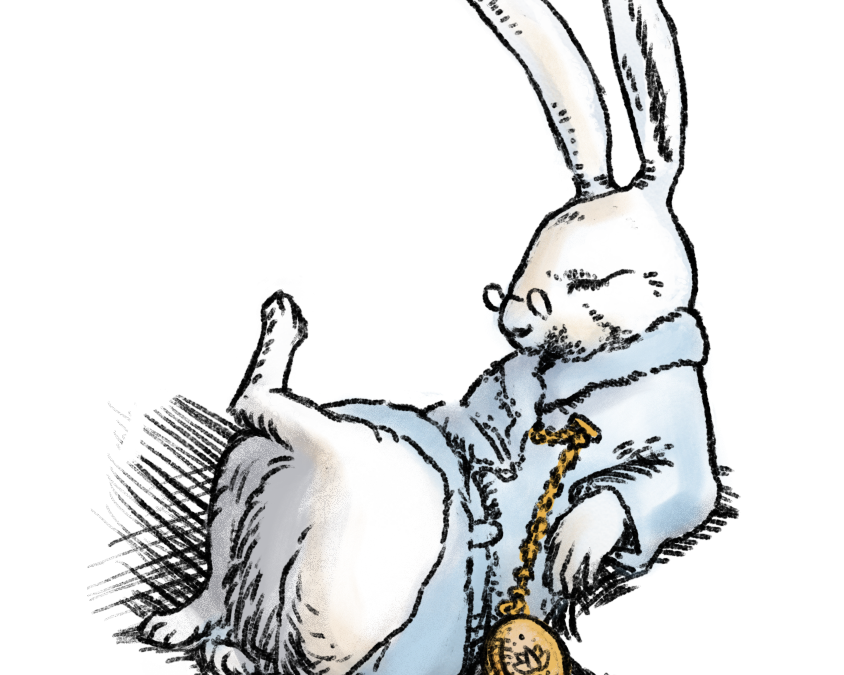“Who are you?”
Lewis Carroll, Alice’s Adventures in Wonderland
(Asked by the Caterpillar)
How does anyone really know who they are? This question has been asked and answered in countless ways, in countless languages and mediums, throughout human history. Despite access to all of the wisdom that humans have gathered through millennia, we’re seemingly no closer to any kind of universal answer.
We have, however, developed various strategies for exploring the question in useful ways, perhaps getting us closer to at least a temporary and personal answer. All of us are always changing and growing, and who we are is, as such, a moving target. It changes, not only over long stretches of time, but even in the short term based on our moods or the company we keep.
We are pack animals, and as a result we feel the need to fit in with the people we’re surrounded by our families, our friends, our co-workers, and our society at large. Living in a time where we are surrounded by so much media, we can add to our list of influences the myriad personalities whose thoughts, opinions, and fashion we absorb and adopt, but who we’re unlikely to have ever interacted with in-person. We have an endless supply of voices outside of us telling us which sorts of behaviors are acceptable, which are unacceptable, and which we simply don’t talk about in decent company.
In the end, however, we are individuals. We each have our own unique set of genetics and experiences, which influence our beliefs and actions. We each have our own freak flag, which we should be allowed and encouraged to fly. In art, this is often spoken of in terms of authenticity, or as finding your own “voice” or “style.” If you don’t happen to call yourself an artist (and for that matter, even if you do) you might not be confronted with very consistent encouragement to look past the consensus of the crowds and to hone the parts of you and the contributions that are uniquely yours.
If you turn to the outside world to find out who you are, it will tell you what it wants you to be. In order to truly learn more about yourself, you need to direct your attention inward, and spend time asking yourself the difficult questions. Unfortunately, this isn’t the easiest thing to prioritize when our attention is besieged constantly by obligations, commitments, movies, games, meals, music, articles, and conversations. We can wake up in the morning, go to bed at night, and during all of the time in between manage to not spend any time reflecting on all the things that we’ve seen and experienced.
It’s important to set aside time for synthesizing the information we’re confronted with every day – to figure out how our new discoveries intersect with our current knowledge and beliefs. Otherwise, we aren’t giving ourselves the space that’s needed to develop our own opinions. When we’re confronted with new challenges, it’s so easy to look up someone else’s answers (or, more often, a collection of answers from experts in whatever field you desire) that we often don’t even bother to think through problems on our own: to figure out what our thoughts and strategies are.
This contemplation is what allows us to make conscious decisions, and to put intention behind both our desires and our actions. It’s one of the many reasons that meditation, mindfulness, and floatation are so beneficial as regular practices. They give us space to think about what we’ve been reading and watching, about how we’ve been acting, about how others behave towards us – about anything that comes to mind, really. As simple as this sounds, if we don’t actively make space for rumination, we aren’t likely to engage in it; the world is simply too good at filling up our waking hours with its numerous requirements and distractions.
Lee Perry, one of the founders of Samadhi Tank Co., was fond of saying, “If you don’t have time to float for an hour, you should float for two.” This is a recognition of the fact that our thoughts and actions are so readily dictated by the demands of the world around us. Even when we are feeling overwhelmed (and perhaps even especially then), it is crucial to prioritize and protect time that we set aside for ourselves.
In their 2021 book, Floating in Quiet Darkness (which we reference and honor in the title of this blog), Lee Perry and her partner Glenn share personal and professional stories from a lifetime spent in the float industry. If you’re looking for inspiration to develop your own routine of self-reflection and self-care, you couldn’t find more inspirational and compassionate role models. Feel free to ask us about them, or their work, next time you come in to float. And of course, if you feel too busy to come in for an appointment right now, perhaps you should book yourself in for a few.
“The tank is a general-purpose tool, not a design for something in particular. It is nothing and it is a powerful instrument for change. It is an environment for learning about oneself, in whatever way one wishes. It does not tell us what to do… we trust in the inherent capacity of the individual to discover what is best for themselves.”
-Glenn and Lee Perry, Floating in Quiet Darkness
(Manufacturers of the first commercial float tanks)

Glenn Perry & Lee Perry



Recent Comments